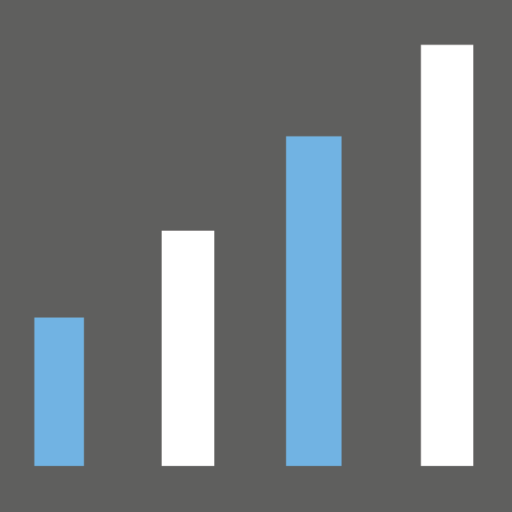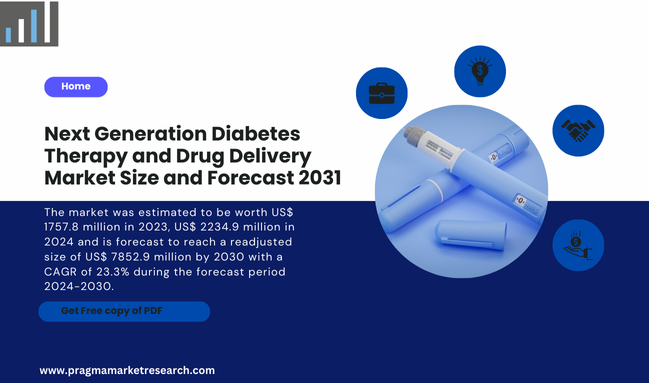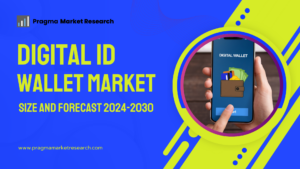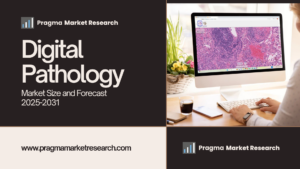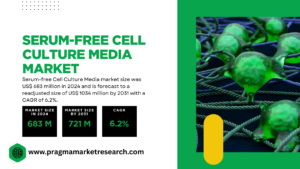Table of Contents
- Introduction to Next Generation Diabetes Therapy and Drug Delivery Market
- Market Overview and Growth Projections
- Key Players in the Next Generation Diabetes Therapy and Drug Delivery Market
- Regional Analysis and Market Distribution
- Market Segmentation by Type
- Market Segmentation by Application
- Innovative Diabetes Therapies
- Driving Factors in the Market
- Challenges and Limitations
- Future Trends and Opportunities
- Competitive Landscape Analysis
- Regulatory Environment
- About Us
- Contact Us
- Related Reports
- Frequently Asked Questions
Introduction to Next Generation Diabetes Therapy and Drug Delivery Market
The Next Generation Diabetes Therapy and Drug Delivery Market is focused on innovative technologies and methods for managing diabetes. This includes advanced drug delivery systems, such as inhalable and oral insulin, insulin patches, and artificial pancreas devices, as well as continuous glucose monitoring (CGM) systems.
These next-generation therapies aim to improve glycemic control, enhance patient convenience, and reduce the burden of diabetes management. The market is driven by the increasing prevalence of diabetes, the need for more effective and less invasive treatment options, and technological advancements in drug delivery and monitoring systems. The Next Generation Diabetes Therapy and Drug Delivery Market represents a significant evolution in diabetes care, offering new hope for patients seeking better control and quality of life.
The focus is on non-invasive, patient-centric solutions, representing a significant advancement in the field. These technologies are poised to transform diabetes management, providing more effective and convenient options for patients worldwide.
Market Overview and Growth Projections
The global market for Next Generation Diabetes Therapy and Drug Delivery was estimated to be worth US$ 1757.8 million in 2023 and is forecast to a readjusted size of US$ 7852.9 million by 2030 with a CAGR of 23.3% during the forecast period 2024-2030
This significant growth is driven by the increasing prevalence of diabetes globally, coupled with advancements in therapy and drug delivery technologies. The Next Generation Diabetes Therapy and Drug Delivery Market is poised to transform diabetes care by offering more effective and convenient solutions.
The market is influenced by factors such as the rising adoption of CGM systems, the development of artificial pancreas devices, and the growing demand for non-invasive insulin delivery methods. These advancements aim to improve patient outcomes, reduce the burden of diabetes management, and enhance overall quality of life. The market is expected to continue its upward trajectory, driven by ongoing innovations and increasing adoption of next-generation diabetes therapies.
Key Players in the Next Generation Diabetes Therapy and Drug Delivery Market
The Next Generation Diabetes Therapy and Drug Delivery Market includes several key players who are driving innovation and shaping the future of diabetes care. Johnson & Johnson and Abbott Laboratories are established healthcare companies with significant presence in the diabetes market. Medtronic is a leading provider of insulin pumps and CGM systems.
Sanofi and Novo Nordisk are major pharmaceutical companies with a focus on insulin therapies. MannKind Corporation and Enteris BioPharma are specializing in innovative drug delivery technologies, such as inhalable and oral insulin. Other key players include Dexcom, Senseonics, Medtech, Synertech, Zosano Pharma, Relmada Therapeutics, Eli Lilly and Company, and Transdermal Specialties.
These companies are actively engaged in research and development to bring new and improved diabetes therapies to market, contributing to the overall growth and advancement of the Next Generation Diabetes Therapy and Drug Delivery Market. The competitive landscape is characterized by innovation, strategic partnerships, and a focus on meeting the evolving needs of patients with diabetes.
| Company | Headquarters | Key Products | Market Share (%) |
|---|---|---|---|
| Johnson & Johnson | New Brunswick, NJ, USA | Insulin pumps, CGM systems | 15% |
| Abbott Laboratories | Chicago, IL, USA | CGM systems, glucose monitoring | 14% |
| Medtronic | Dublin, Ireland | Insulin pumps, CGM systems | 13% |
| Novo Nordisk | Bagsvaerd, Denmark | Inhalable insulin, oral insulin | 10% |
Regional Analysis and Market Distribution
The global Next Generation Diabetes Therapy and Drug Delivery Market is segmented into North America, Europe, Asia Pacific, South America, and the Middle East & Africa. North America is the largest market due to a high prevalence of diabetes and advanced healthcare infrastructure. Europe is the second-largest market, with increasing adoption of innovative diabetes therapies.
Asia Pacific is expected to be the fastest-growing region, driven by rising disposable incomes, increasing awareness of diabetes, and improving healthcare access in countries like China and India. South America and the Middle East & Africa are emerging markets with growing adoption of next-generation diabetes therapies as healthcare infrastructure improves.
The regional distribution of the Next Generation Diabetes Therapy and Drug Delivery Market reflects varying levels of healthcare development, economic conditions, and disease prevalence across different regions.
Market Segmentation by Type
The Next Generation Diabetes Therapy and Drug Delivery Market is segmented by type into inhalable insulin, oral insulin, insulin patches, CGM systems, and artificial pancreas devices. CGM systems are widely adopted due to their ability to provide continuous monitoring of glucose levels, enabling better glycemic control.
Artificial pancreas devices, which automate insulin delivery based on CGM data, are gaining popularity due to their potential to improve patient outcomes and reduce the burden of diabetes management. Inhalable and oral insulin offer convenient non-invasive alternatives to traditional insulin injections.
Insulin patches provide a less invasive method of insulin delivery compared to injections. Each type of next-generation diabetes therapy caters to different patient preferences and clinical needs, contributing to the overall growth and innovation of the market.
Market Segmentation by Application
The global Next Generation Diabetes Therapy and Drug Delivery Market is segmented by application into diagnostic/clinics, ICUs, and home healthcare. Diagnostic/clinics are the primary application setting for diabetes therapies, providing access to advanced diagnostic tools and treatment options. ICUs utilize advanced diabetes therapies for managing critically ill patients with diabetes.
Home healthcare is a rapidly growing application segment, driven by the increasing adoption of CGM systems, insulin pumps, and other devices that enable patients to manage their diabetes remotely. The Next Generation Diabetes Therapy and Drug Delivery Market caters to diverse application settings, with each playing a crucial role in providing access to innovative diabetes therapies.
| Application | Market Share (%) | Growth Drivers | Key Trends |
|---|---|---|---|
| Diagnostic/Clinics | 45% | Access to advanced tools and therapies | Adoption of CGM and AI-driven solutions |
| ICUs | 25% | Management of critically ill patients | Use of artificial pancreas and remote monitoring |
| Home Healthcare | 30% | Remote patient management | Expansion of telemedicine and wearable devices |
Innovative Diabetes Therapies
The Next Generation Diabetes Therapy and Drug Delivery Market is driven by several innovative approaches aimed at improving patient outcomes and quality of life. These therapies include inhalable and oral insulin, which offer non-invasive alternatives to traditional injections, providing convenience and potentially better adherence.
Insulin patches deliver insulin transdermally, providing a steady, controlled release of the hormone. CGM systems allow for continuous monitoring of glucose levels, enabling patients to make informed decisions about their diet and insulin dosage. Artificial pancreas devices automate insulin delivery, mimicking the function of a healthy pancreas and providing optimal glycemic control.
These innovative therapies represent a significant step forward in diabetes management, offering more effective, convenient, and personalized solutions for patients.
Driving Factors in the Market
Several factors are driving the growth of the Next Generation Diabetes Therapy and Drug Delivery Market. The increasing prevalence of diabetes globally is a major driver, as more people require advanced therapies to manage their condition. The rising awareness of diabetes and its complications is also contributing to market growth, as patients seek more effective solutions.
Technological advancements in drug delivery and monitoring systems are driving innovation and improving the performance of next-generation diabetes therapies. The increasing demand for non-invasive and convenient treatment options is also fueling market growth, as patients seek alternatives to traditional injections. Government initiatives and support for diabetes research and care are further contributing to the market’s expansion.
The focus on personalized medicine and patient-centric care is also a significant driver, as healthcare providers and patients seek therapies that can be tailored to individual needs. These driving factors are expected to sustain the growth of the Next Generation Diabetes Therapy and Drug Delivery Market in the coming years.
Challenges and Limitations
Despite the promising growth prospects, the Next Generation Diabetes Therapy and Drug Delivery Market faces several challenges and limitations. The high cost of some advanced therapies, such as artificial pancreas devices, can be a barrier to access for many patients. Regulatory hurdles and the need for rigorous clinical trials can slow down the market entry of new therapies.
Patient adherence to complex treatment regimens can be a challenge, particularly for therapies that require frequent monitoring or device management. The lack of reimbursement coverage for some next-generation therapies can limit their adoption. Competition from traditional diabetes therapies, such as insulin injections and oral medications, also poses a challenge.
Data security and privacy concerns related to CGM systems and other connected devices need to be addressed to ensure patient trust and confidence. Overcoming these challenges is crucial for realizing the full potential of the Next Generation Diabetes Therapy and Drug Delivery Market.
Future Trends and Opportunities
The Next Generation Diabetes Therapy and Drug Delivery Market is expected to see several key trends in the future. The increasing use of artificial intelligence (AI) and machine learning (ML) in diabetes management will enable more personalized and automated treatment decisions. The development of closed-loop insulin delivery systems, which combine CGM and insulin pumps, will provide more precise and automated glycemic control.
The integration of telehealth and remote monitoring will allow healthcare providers to track and manage patients’ diabetes remotely, improving access to care. The emergence of new drug delivery technologies, such as microneedle patches and implantable devices, will offer more convenient and less invasive treatment options. The focus on preventative care and early intervention will drive the development of new diagnostic tools and therapies.
These trends are expected to shape the future of the Next Generation Diabetes Therapy and Drug Delivery Market, enhancing the effectiveness and accessibility of diabetes care.
Competitive Landscape Analysis
The Next Generation Diabetes Therapy and Drug Delivery Market is characterized by a mix of large pharmaceutical companies, medical device manufacturers, and specialized biotechnology firms. Key competitive strategies include product innovation, strategic partnerships, and geographic expansion. Companies are focusing on developing advanced therapies with improved efficacy, safety, and convenience to gain a competitive edge.
Strategic partnerships and collaborations are common, enabling companies to leverage complementary expertise and resources. Geographic expansion into emerging markets is also a key strategy for driving growth. The competitive landscape is expected to intensify as the market grows, with companies continuously seeking new ways to differentiate themselves and meet the evolving needs of patients with diabetes.
| Competitive Strategy | Description | Example | Benefit |
|---|---|---|---|
| Product Innovation | Developing advanced therapies with improved efficacy | Artificial pancreas devices, inhalable insulin | Attracts patients seeking more effective solutions |
| Strategic Partnerships | Collaborating to leverage expertise and resources | Partnerships between device manufacturers and telehealth providers | Expands market reach and improves patient access |
| Geographic Expansion | Expanding into emerging markets | Introducing new therapies in Asia-Pacific | Increases global market share |
| Patient-Centric Solutions | Tailoring therapies to individual needs | Personalized diabetes management plans | Enhances patient adherence and outcomes |
Regulatory Environment
The Next Generation Diabetes Therapy and Drug Delivery Market is subject to stringent regulatory requirements in most countries. In the United States, the Food and Drug Administration (FDA) regulates diabetes therapies as medical devices or drugs, requiring premarket approval or clearance before they can be marketed. The FDA also monitors the safety and effectiveness of these therapies after they are on the market.
In Europe, diabetes therapies are regulated under the Medical Device Regulation (MDR) or the European Medicines Agency (EMA), depending on their classification. These regulations set standards for the design, manufacturing, and marketing of these therapies. Compliance with these regulations is essential for manufacturers to market and sell their products.
The regulatory environment is constantly evolving, and manufacturers must stay abreast of the latest requirements to ensure they remain compliant and can bring their innovative therapies to market efficiently.
About Us
Pragma Market Research is a dynamic market research and consulting firm with experienced analysts in various industries. Our industries of expertise include Medical Devices, Pharmaceuticals, Semiconductors, Machinery, Information and Communication Technology, Automobiles, Chemicals and Materials, Packaging, Food and Beverages, Specialty Chemicals, Fast Moving Consumer Goods, and more.
Contact Us
Akshay G.
Pragma Market Research
+1 425 230 0999
Frequently Asked Questions
The global Next Generation Diabetes Therapy and Drug Delivery Market is projected to grow at a CAGR of 23.3% from 2024 to 2030. The market is expected to increase from US$ 1757.8 million in 2023 to US$ 7852.9 million by 2030. This growth is driven by factors such as the increasing prevalence of diabetes, the need for more effective treatment options, and technological advancements.
The leading players in the global Next Generation Diabetes Therapy and Drug Delivery Market include Johnson & Johnson, Abbott Laboratories, and Medtronic. These companies offer a wide range of innovative solutions for diabetes management.
The major types of therapies included in the Next Generation Diabetes Therapy and Drug Delivery Market are inhalable insulin, oral insulin, insulin patches, CGM systems, and artificial pancreas devices. These therapies aim to improve glycemic control and enhance patient convenience.
The primary applications of next-generation diabetes therapies are in diagnostic/clinics, ICUs, and home healthcare settings. These settings provide access to advanced diagnostic tools and treatment options for patients with diabetes.
Some of the challenges facing the Next Generation Diabetes Therapy and Drug Delivery Market include the high cost of advanced therapies, regulatory hurdles, patient adherence to complex treatment regimens, and data security and privacy concerns. Addressing these challenges is crucial for the continued growth and adoption of these therapies.
